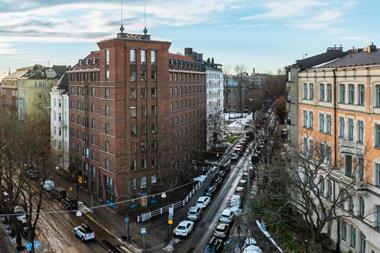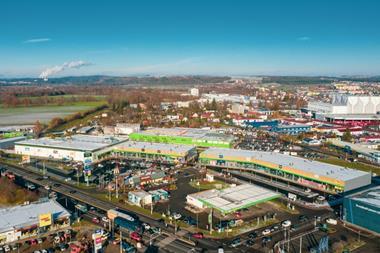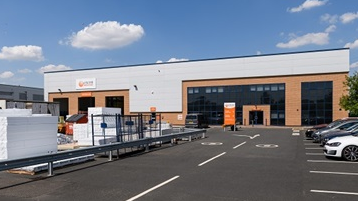There is more than a 50% chance that you are reading this at home, and only a quarter that you are in the office. Or at least these were the findings of a poll of the online audience of last week’s virtual IPE Real Estate Global Conference & Awards. There was a hint of irony to the fact that only a quarter of people watching an online panel debate about “re-opening the workplace and the future of offices” were in the office.
The session, presented and moderated by Nathalie Charles, global head of investment management and deputy CEO at BNP Paribas Real Estate, directly addressed one of the biggest questions hanging over the real estate industry today.
Charles presented a fairly benign outlook for office occupancy in Europe. She predicted a 40% decrease in office take-up this year versus 2019, but she also argued that – unlike in the aftermath of the global financial crisis – vacancy rates would not rise substantially due to an existing lack of supply and the delaying of any new developments. “Currently, there are a lot of people out looking for new offices, but they don’t make decisions,” she said.
The topic of the future of offices – and the related question of whether city centres are under threat – came up time and time again during the two-day conference. The day before, Alexis Crow, who leads the geopolitical investing practice of PwC, told the conference that, despite all the talk about a resurgence in suburbanisation, major cities like New York and London would eventually drive economic growth after the pandemic.
She cited a recent article by American comedian Jerry Senfield, who wrote an opinion piece for the New York Times entitled So You Think New York is ‘Dead’, an impassioned rebuttal to a widely circulated LinkedIn article about how the experience of COVID-19 would lead to the city’s long-term decline.
“This is the question I’m dealing with most frequently with real estate investors,” Crow said. “Post-virus, the city will drive job creation and growth. I know that I am outlier there, I know there has been a snap-back to suburbs.”
She told conference chairman Nils Kok, professor at Maastricht University, that “you are looking at a decline of about 20% footprint in office, not the apocalyptic 50% that some are portending.” Kok responded that “20% is still fairly significant when it comes to real estate”.
In London, from where the conference was being streamed, commuter trains remained quiet and offices were still mostly empty, despite calls by the government to encourage people to return to the workplace. In August, a survey by Morgan Stanley’s research unit AlphaWise showed that UK workers were returning to the office much more slowly than many of their continental European counterparts.
“We have seen a lots of differences depending on the countries and the districts,” said Paulo Dias, one of Charles’ panellists and CEO for Southern and Western Europe, North Africa, Middle East and Brazil at flexible workspace provider IWG.
But, Dias said, even in Paris offices it has been IWG’s more suburban offices that have seen close to full occupancy, while city-centre locations continued to struggle. “When you go into places like central Paris and places like La Defense, where you really get access to the office through public transportation, then it’s a problem”.
The consensus seemed to be that central offices in major cities that rely on public transport would suffer in the short-term, but this does not necessarily mean a long-term decline of the CBD.
Aldo Mazzocco, CEO of Generali Real Estate, said he had seen the urbanisation-suburbanisation pendulum swing back and forth over his long career. “This migration from the centre to the periphery,” he said. “From San Francisco to San Jose; from San Jose to San Francisco back and so on. So probably we will experience again a movement towards the outskirts, greener areas and so on [but] the attraction of the downtown and the CBD life of some cities will attract again.”
John Duckworth, managing director at the Instant Group, said “cities have always been this amazing magnet for human interaction”, but he warned that office markets face significant adjustments as a result of the enforced remote-working experiment of recent months. “It’s important not to get binary on things – and history has proven that the city does work – but I do think there are some interesting forces at work.”
Those forces include what Duckworth termed “the unveiling of the efficacy of remote working” and the fact that what many people have not missed is the daily grind of the commute. Commuting in London has become notoriously expensive, unreliable and unpleasant.
“That doesn’t mean,” he said, “we all are going to be homeworking. No one believes that, but what I do think will happen is there is going to be this readjustment around the workplace. The attraction of the city will always remain [but corporates] are going to want to see more of a dispersed approach around how they occupy workspace.”
Similarly, Mazzocco was in favour of not taking too-binary a position on the future of the workplace. To “imagine that everything will go back to normality is a mistake”, but likewise to “imagine that everything will be a revolution is a mistake”.
A lot of focus has been on how much staff productivity is affected by a move to remote working. But Mazzocco said it was also a question of “energy”. He recalled how the lockdown experience in Milan at Generali Real Estate could be split into three parts. “My experience has been a fantastic first month with less wasting of time travelling around and so on, and the same [level of] output,” he said. But the second month saw a decline in energy, and the third month led to the realisation that people needed to be recalled to the office – “not only in terms of productivity but in terms of energy and alignment of thinking”.
Mazzocco’s story resonated with Charles, who said that the working experience in Paris during the lockdown could be best described as crisis management. “I had more or less the same vision, even though the lockdown in France was shorter than in Italy,” she said. “When you are lot under pressure and people are committed to their companies, they are engaged a lot, everybody is going in the same direction [but] you can’t be in crisis mode forever.”
During a previous session, François Trausch, CEO of Allianz Real Estate, said: “It’s a big debate among landlords, a big debate among the real estate industry. It’s also a big debate internally in my own company, Allianz. On the one hand, as the head of the real estate business I am pushing for people to come back to the office, but also as a corporation, Allianz is very comfortable in people working from home.”
But, he asked: “Can you grow a business from home? I’m not sure. Maybe in a tech business, but not in a service industry. Can you really build a company culture over time working from home? Probably not.”
Trausch said Allianz Real Estate had been able to work remotely in an effective way because he had spent the past six years “building a global team” and a company culture. “Of course, that can only go so far, because how can you recruit people on Zoom? Very difficult,” he said. “How do you onboard people as well? People are also realising that working from home has been good, but it also has limitations. So we know that the solution will be a hybrid solution. It’s not going to be all from home or all back in the office.”
Trausch continued: “The consensus view now is that the office is still required – that’s the good news. What it does to the footprint? [Some say] the footprint is going to shrink, others says in many markets we had such a densification, going back to the normal density will already take care of the square metres you have otherwise lost.
“So the view that we took at Allianz is twofold. One is that we believe if you have an office building in the CBD, you are going to be in a better position than an office in the suburbs, because, regardless of the evolution, a building in the CBD will always have more choice of potential users. And two, yes there will be a bifurcation in the office market between the good buildings and less good buildings.”
So while remote working has shown to be effective in its own right, the full benefits of the office are perhaps only becoming noticeable now that it has been taken away for many. The office will therefore continue to play a role, but a readjusted one.
“You are going to see this rebalancing around what the workplace represents and effectively this questioning about what the purpose of the office is for,” Duckworth said. “It’s a fascinating time and one that I think could lead to quite a few systemic changes in the industry.”


















